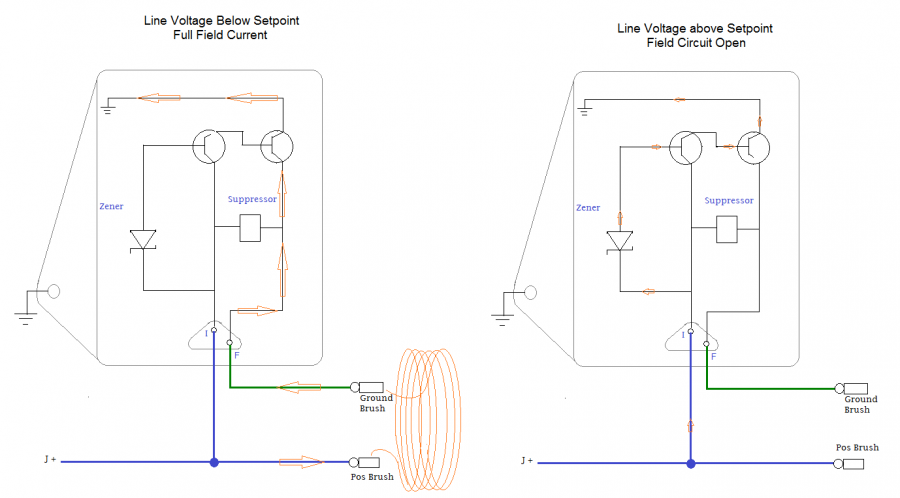Posted By: dart4forte
Too Much Voltage - 11/09/19 11:18 PM
First, I hate wiring and electrical. 1974 Dodge D100. So, installed a new Autometer voltmeter. Wired into the ignition feed and wired to a good ground. Fired it up and it was reading 12-14 volts at idle and 14.5 at cruise. Anyway yesterday afternoon I was cruising down the freeway and noticed the VM reading 16.5, took the offramp and came to a stop. It read 16 at idle. Turned on the lights and it made no differance.
Today I replaced the voltage regulator with a spare I had. Still reads high. Switched alternators and I get the same. Went through and made sure all my grounds are tight. I even added a frond wire to one of the mounting bolt for the regulator. Cleaned up the ground foe the batter6 cable. Had the battery checked, it showed it had a bad cell. So, new battery. Came home and put it all together. Now, it idles at 14-14 volts and when driving it’s back to 16-17 volts.
Any suggestions?
Today I replaced the voltage regulator with a spare I had. Still reads high. Switched alternators and I get the same. Went through and made sure all my grounds are tight. I even added a frond wire to one of the mounting bolt for the regulator. Cleaned up the ground foe the batter6 cable. Had the battery checked, it showed it had a bad cell. So, new battery. Came home and put it all together. Now, it idles at 14-14 volts and when driving it’s back to 16-17 volts.
Any suggestions?
